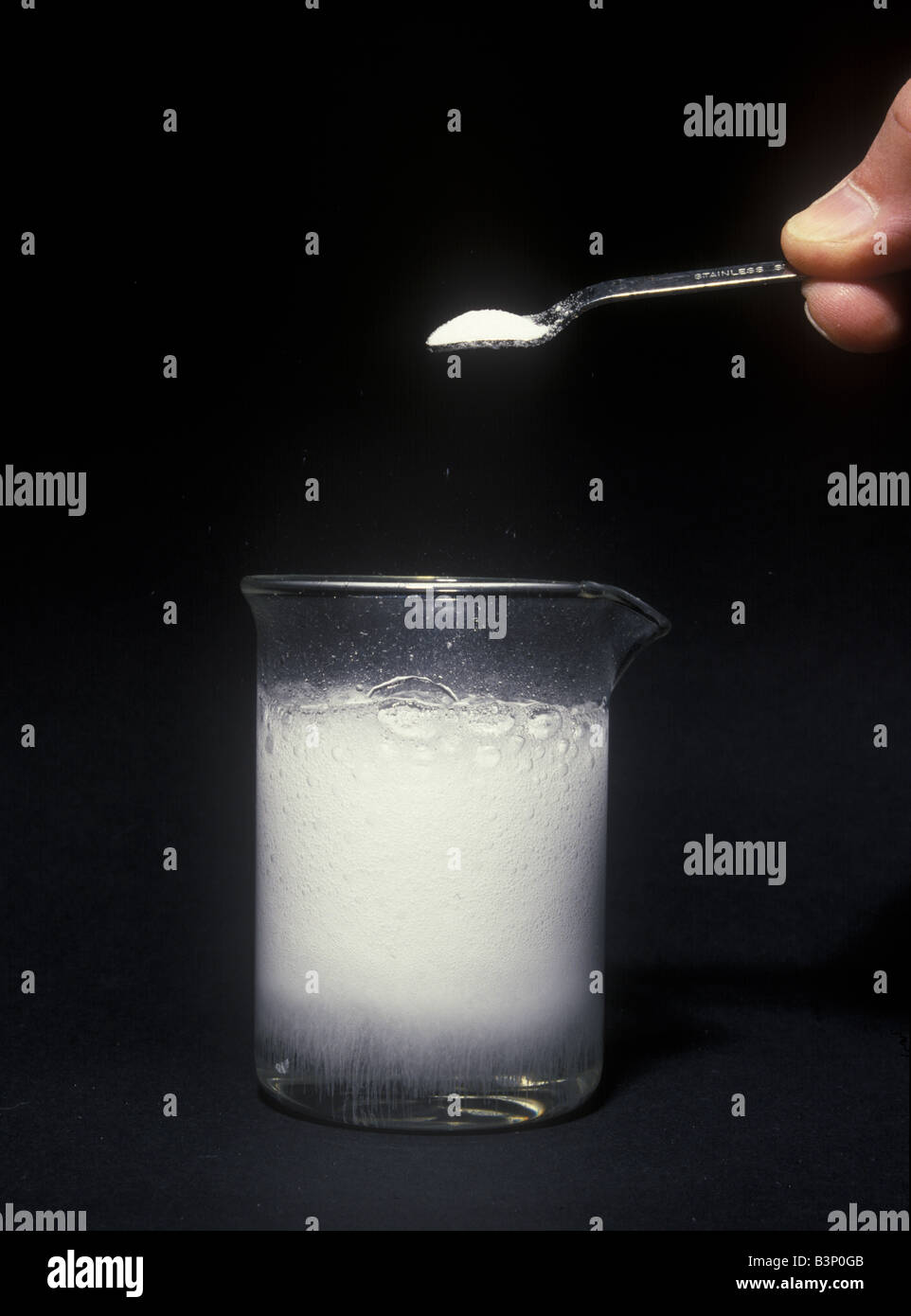Calcium Reaction With Dilute Hydrochloric Acid
So the solution contains calcium ions and chloride ions - calcium chloride solution. The chemical reaction is given below.

Calcium Carbonate Reacts With Dilute Hydrochloric Acid To Produce Carbon Dioxide Stock Photo Alamy
It is insoluble in ethanol and acetic acid but soluble in dilute nitric acid and hydrochloric acid.

. These two minerals are one of the most. In general a neutralisation reaction can be written as Base Acid Salt W ater 215 Reaction of Metallic Oxides with Acids Activity 27 n Take a small amount of copper oxide in a beaker and add dilute hydrochloric acid slowly. Use the treated sample in the test procedure.
HYDROCHLORIC ACID is an aqueous solution of hydrogen chloride an acidic gas. Boil for 20 minutes. A hydrogen ion is just the proton and no electron.
An acidic oxide sulfur dioxide combines with water vapor in the air to produce sulfurous acid in the following reaction. In a reaction in water neutralization results in there being no excess of hydrogen or hydroxide ions present in the solution. Add 5 mL of 60 N 11 hydrochloric acid solution to 100 mL of sample in a 250-mL Erlenmeyer flask.
AcidBase SaltWater Heat is evolved The following reaction is an example. Add deionized water until the volume is 100 mL. Hydrochloric acid HCl Sodium hydroxide NaOH Sodium chloride NaCl Water H 2 O Boojho added dilute sulphuric.
The reaction between an acid and a base to give a salt and water is known as a neutralisation reaction. Dolomite produces a very weak reaction to cold dilute hydrochloric acid. This photo comes from.
Reacts exothermically with organic bases amines amides and inorganic bases oxides and hydroxides of metals. CopperII carbonate is an insoluble green powder. Calcite is composed of calcium carbonate CaCO 3 while dolomite is a calcium magnesium carbonate CaMgCO 3 2.
02 g of a magnesium ribbon reacts completely with dilute hydrochloric acid in 40 seconds. What is the rate of reaction. It is found in bones milk teeth and ground.
The pH of the neutralized solution depends on the acid strength of the reactants. It slightly dissolves in water. Test your reaction to removing foods that may make heartburn symptoms worse like chocolate spicy foods tomatoes onions mint dairy products and citrus fruits.
Undergoes a very energetic reaction with calcium phosphide Mellor 88411946-1947. Adjust the pH to 35 with 5 N sodium hydroxide solution. Dolomite is very similar to the mineral calcite.
Ca 3 P 2 6 H 2 O 2 PH 3. HCl hydrochloric acid. Let the solution cool to room temperature.
An acid is a substance that produces hydrogen H ions when it is added to water. Hydrochloric acid also called HCL HCL acid or betaine hydrochloride in supplement form is considered one of the most important fluids or juices found in the human body. Salt and water are produced in this process with the evolution of heat.
Calcium phosphide reacts with water to form phosphane and calcium hydroxide. A The rate of reaction determined in above Example is known as the average rate of reaction. If we look at the formulas of different acids we can see that they all contain at least one H hydrogen for example.
The reaction between an acid and a base is known as neutralisation. H 2 SO 4 sulfuric acid. The reaction between copperII carbonate and dilute sulfuric acid.
However if the acid is warm or if the dolomite is powdered. The average rate of reaction is the average value of the rate of reaction within a specified period of time. In chemistry neutralization or neutralisation see spelling differences is a chemical reaction in which acid and a base react quantitatively with each other.
The rate of this reaction depends on the amount of sulfur dioxide in the air. The calcium ions were originally present in the solid and end up in the solution but they are still calcium ions. Sulfuric acid is the most commonly produced chemical in all of industry according to the USGS with uses in fertilizer production chemical production as a drying agent as battery acid and much moreIt is a strong diprotic acid with as little as one drop of acid required to decrease the pH of one liter of water from 70 to less than 30.
For example calcium carbonate CaCO 3 deteriorates as a result of its reaction with the pollutant sulfur dioxide. HNO 3 nitric acid.

A What Happens When Dilute Hydrochloric Acid Is Added To Sodium Carbonate Write A Balanced Youtube
What Is The Reaction Between Calcium Carbonate And Hydrochloric Acid Quora

Calcium Carbonate Reacts With Dilute Hydrochloric Acid To Produce Carbon Dioxide Stock Photo Alamy

0 Response to "Calcium Reaction With Dilute Hydrochloric Acid"
Post a Comment